Temporary fix for leaking, cracked bathroom tile floor
mharrisg
3 years ago
Featured Answer
Sort by:Oldest
Comments (16)
millworkman
3 years agopagosapamie
3 years agoRelated Discussions
Bathroom: How to clean/fix moldy/cracked surface, get rid of buildup
Comments (8)Agree with the above and would like to add that in my experience, the dust from toilet paper tearing and the skin cells that we slough off in the bathroom just build up on surfaces around the toilet and sink for those of us who do not wipe these surfaces down every week. I have some things near my toilet that just get covered with dust. Then anything on the toilet itself is sitting on colder porcelain. It is colder because of the cold water it is holding. In the humid air of the bathroom that means that water then condenses on the outer surface of the cold porcelain, mixes with the microscopic skin cells and paper fluff and powder and it just STICKS to the surface. It builds up around the tabs of the toilet seat screws because that is where the dust stops when it is blowing around the room. Any sharp angles on a toilet will do the same thing. The solution is to wipe surfaces more frequently. I had to start buying the disinfectant wipes when I had an incontinent dog. So, now that I have them in the house, I will use them in the bathroom. I wipe the toilet flush handle, the top of the seat lid, the underside of the seat lid, the seat and the underside, then I go behind the seat and get the area you photographed. Next, I get the rim. I might use another wipe and do the door handles, the switches, the faucet and handles on the tap, then the tank lid, then the outside of the toilet bowl and use the last wipe to redo the rim if it was still not perfect. I always move from the cleanest places to the grimiest places. A third wipe would do the windowsill and the counter. Now, I may not do all three wipes at one time, or in one day. I may see an area that is yucky and do one wipe's worth that day, then another a few days later. I also have disposable rubber gloves around and if I am in the mood to clean I will put on one or a pair and scrub the toilet and do all the wiping and vacuum and mop the floor. My goal is to not be embarrassed to let someone use my bathroom if they should drop by. I am a messy housekeeper, but I can still be a CLEAN messy housekeeper, I figure!...See Moregrout cracks bathroom
Comments (10)I kinda figured out what's happening actually. the cracks in the grout were only the beginning. the top row of large format tiles which were vertically oriented actually are buckled. this is at the seam between the old house and the new house. is not obviously structurally unsound but must have settled... either that or the Hardie board was installed crooked causing strain... i should have put smaller tiles or placed the tiles horizontally. probably high enough not to be a major leak concern. I'll observe this for a few months. the grout cracking actually looks more like shrinkage to me but they should have used caulk. people are just telling me to caulk over it rather than chiseling out the grout. all the floor leveling issues were caused by trying to make new sister joists across the floors, but not being able to change out the old joists which are embedded under the walls. the old and new joists were milled at different sizes (cannot get match) so it caused some discrepancy. again not structurally dangerous but annoying. not sure if it's worth fixing but I'll get a different structural engineer and a leveling company to look at it. so same underlying cause, different symptoms. in another post I noted the stairs cracking. this was just general crappy cosmetic workmanship and not structural. what a pain in the @$$...See MoreFix cracks in the grout between bathroom tile (floor and wall)
Comments (10)thanks mainenell. Any suggestions on the type of caulking, Im sure once I go to Lowes or HD, there will be so many types and brands with minor and major differences, I will get lost. Most frustrating thing about a DIY project is to pick an item at these big box stores. Is this the current one grout?...See Moreadvice for leak in new bathroom tile
Comments (8)HELP! MY SHOWER IS LEAKING! Many times, a leaking tiled shower can be the result of an unqualified person performing the work. A leaking shower can damage other areas of the bathroom or even the room below the shower. There are multiple reasons why this could happen. Your first line of defense should be to have your plumber check for leaks in the: · shower control valve and/or pipe to the shower head · water supply lines · drain and trap Your second line of defense should be to have your shower door installer check for leaks in: · the door track mounted on the curb (if present) · the vinyl sweep on the bottom of the door · between the vertical metal frame and the tiled wall · between the door and the metal frame attached to the tiled wall What evidence do you see of a leaking shower? 1. The ceiling in the room below my shower has water stains and/or water is dripping from the ceiling Potential Causes · Hole or leak in the pan liner under the tile · Clogged weep holes in the drain assembly · No or incorrectly applied waterproofing on the curb, walls, niches, and seats · Post-tile installation: installed grab bars, soap dishes, or other screw-attached items – not properly sealed 2. The floor tile just outside my shower is wet, damp, and/or discolored Potential Causes · Shower curb is not sloped properly toward the drain and water is running onto outside floor · Shower pan membrane/liner not properly installed over the entire curb and continuing to the floor outside the shower · Pan liner pierced during shower door installation 3. The tile on the inside of my shower walls, floor or curb is loose, the grout is cracking or there is a mineral deposit build up at grout/caulk lines Potential Causes · Blocked weep holes at drain · Breach or incorrect installation of shower pan membrane/liner · Improper or lack of waterproofing at wall to curb and/or other changes in plane · Improper materials used under the tile · Lack of proper ventilation (ceiling fan) 4. The tile on the curb is cracked and/or loose and/or the walls next to the curb are deteriorating. Potential Causes · The curb was not properly constructed and/or waterproofed · Backer board was nailed or screwed through the shower pan liner and into the curb. No waterproofing was applied · The curb does not have the proper slope toward the drain · The shower door was improperly installed (door installer error) o Holes drilled into the curb or the floor on a barrier free shower o Holes drilled into the wall and not properly sealed 5. The walls outside my shower are damp and spongy, drywall is bubbling, or damaged. There is evidence of moisture damage and mold/mildew on the wall(s) on the other side of the shower. Potential Causes · The shower pan liner was not correctly installed · The shower drain was not properly installed · The shower drain weep holes are clogged · Improper or lack of waterproofing on walls up to the shower head · Fasteners were placed through the tiled surface and not sealed 6. My shower has a terrible odor Potential Causes · Incorrect drain installed · The floor under the shower pan liner was not properly sloped toward the drain · The shower drain weep holes are clogged · The lower part of the drain body (below the tile surface) was incorrectly installed higher than the surrounding floor and will not drain · Stagnant water and organic shower products (soap, shampoo, body wash, and body oil are trapped below the tile allowing mold to grow Unless otherwise indicated (such as plumber or glass installer), it is important that you seek the help of an industry QUALIFIED tile professional who uses tile industry standards and approved best practices for shower installations and strictly follows the material manufacturer’s specifications and instructions. It’s helpful to understand this about showers: A properly constructed shower manages and directs all the water that flows through it to the drain, and nowhere else. The shower “fixture” needs to be water tight, utilizing one of the two basic types of showers: a "Water In, Water Out" shower system, which is constructed with a clamping ring drain and waterproof shower pan liner or a "Sealed System" which employs a bonding flange drain and a waterproofing membrane that extends to the shower head. Both systems require that the walls, seats, ledges, niches, and curbs be treated with the appropriate waterproofing product. If the waterproofing, drain components, or any part of the shower system is not installed properly, is damaged, punctured, or compromised during installation, a leak can and will result in failure. PLEASE NOTE: Beware of the claims that a leaking shower can be eliminated by using grout or caulking repairs/replacement or the application of a sealer or coating. These actions will, at best, provide only a temporary fix. Beware of individuals and companies who are NOT insured, licensed where required, or certified by the tile industry. Wisely consider, interview, and hire dedicated tile professionals who have received proper training and have experience in the process of providing a long-lasting and trouble-free shower installation. A qualified tile professional will perform work in accordance with the Tile Council of North America (TCNA) HandbookMethods, American National Standards Institute (ANSI) Standards, and the manufacturer’s written instructions....See MoreJoseph Corlett, LLC
3 years agoklem1
3 years agoMiMi
3 years agoBruce in Northern Virginia
3 years agomharrisg
3 years agomharrisg
3 years agocatbuilder
3 years agoJoseph Corlett, LLC
3 years agomharrisg
3 years agoUser
3 years agolast modified: 3 years agoSJ McCarthy
3 years agokudzu9
3 years agoCody Alan
last year
Related Stories
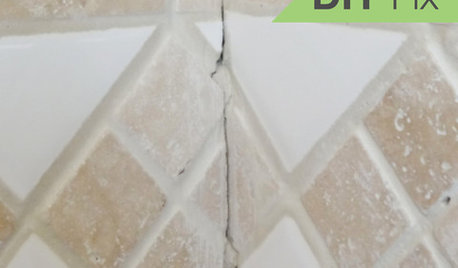
BATHROOM TILEQuick Fix: Repair Cracked Bathroom Grout
Banish an eyesore and safeguard your bathroom from water damage in 30 minutes or less with this DIY repair
Full Story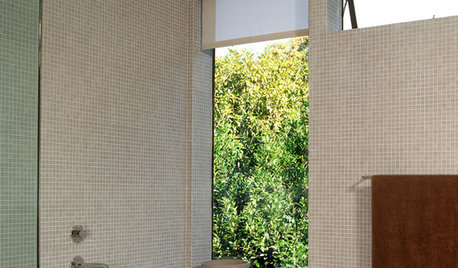
BATHROOM DESIGNFloor-to-Ceiling Tile Takes Bathrooms Above and Beyond
Generous tile in a bathroom can bounce light, give the illusion of more space and provide a cohesive look
Full Story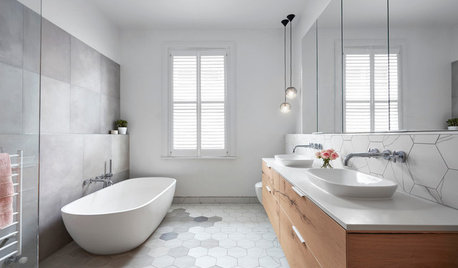
BATHROOM DESIGNFloor Tile Options for a Stylish Bathroom
From the countless choices of bathroom tile available, we focus on some of the best looks for the floor
Full Story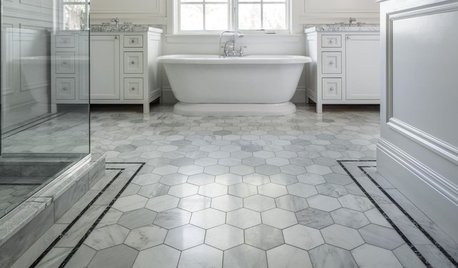
TILEWhy Bathroom Floors Need to Move
Want to prevent popped-up tiles and unsightly cracks? Get a grip on the principles of expansion and contraction
Full Story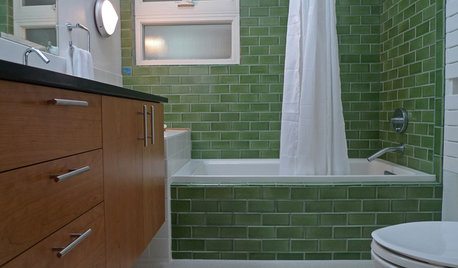
BATHROOM DESIGNBathroom Surfaces: Ceramic Tile Pros and Cons
Learn the facts on this popular material for bathroom walls and floors, including costs and maintenance needs, before you commit
Full Story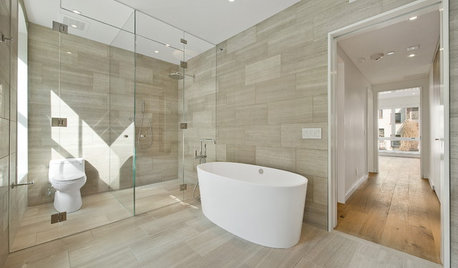
REMODELING GUIDESTransition Time: How to Connect Tile and Hardwood Floors
Plan ahead to prevent unsightly or unsafe transitions between floor surfaces. Here's what you need to know
Full Story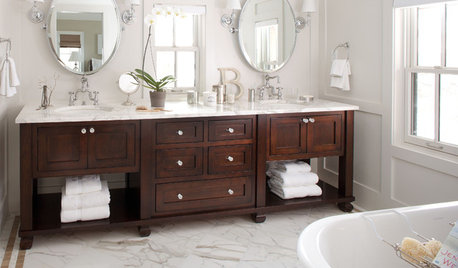
BATHROOM DESIGNBathroom Design: Getting Tile Around the Vanity Right
Prevent water damage and get a seamless look with these pro tips for tiling under and around a bathroom vanity
Full Story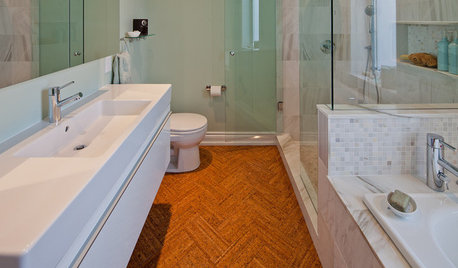
FLOORSWill Cork Float for Your Bathroom Floor?
Get the facts on advantages, disadvantages, costs and installation to see if a cork bathroom floor is right for you
Full Story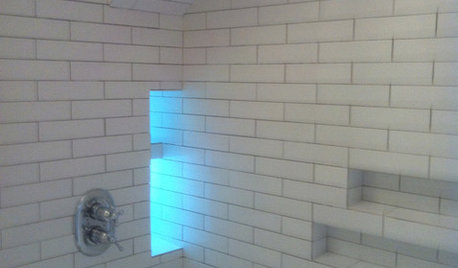
BATHROOM DESIGN10 Top Tips for Getting Bathroom Tile Right
Good planning is essential for bathroom tile that's set properly and works with the rest of your renovation. These tips help you do it right
Full Story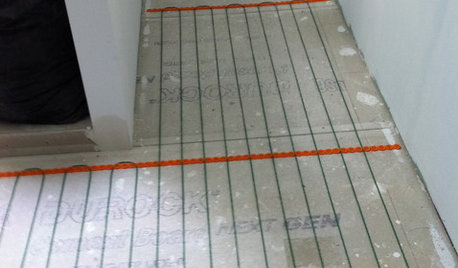
BATHROOM DESIGNWarm Up Your Bathroom With Heated Floors
If your bathroom floor is leaving you cold, try warming up to an electric heating system
Full Story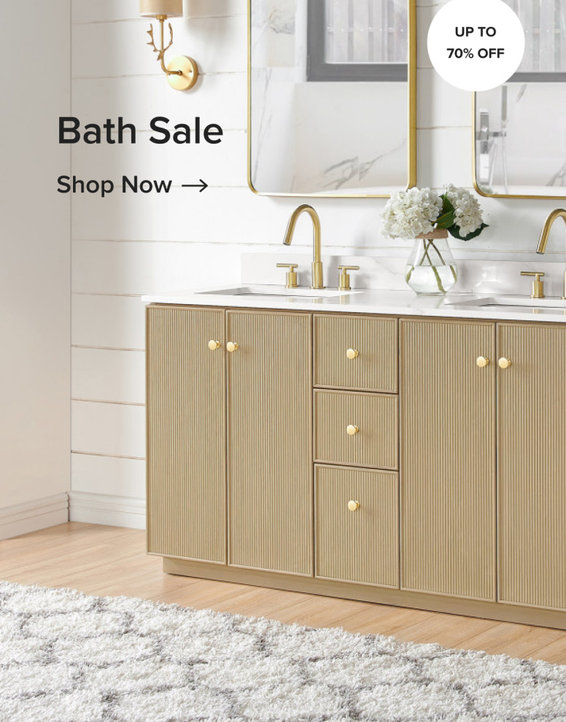


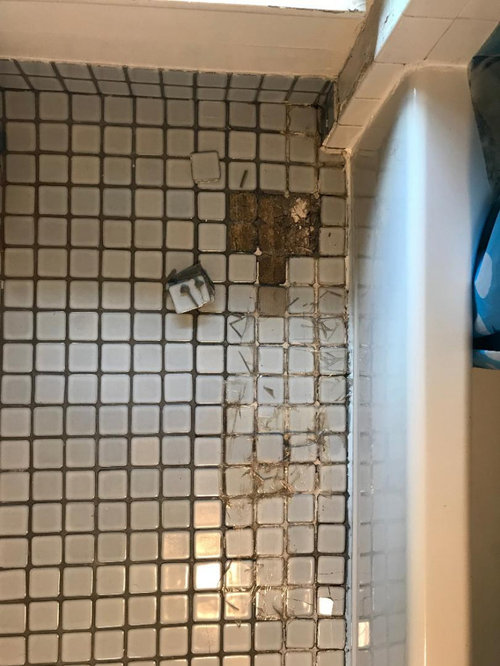


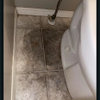

User